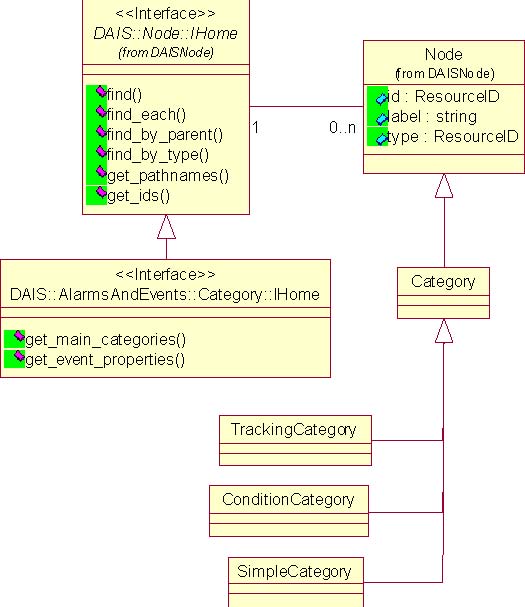
| Previous | Table of Contents | Next |
These are definitions for manipulating categories. A category describes the content of an event. Categories are organized
in a two level hierarchy where the first level has the three mandatory main categories; simple, condition, and tracking.
Simple category does not have a condition space (refer to ConditonSpace). Generation of simple category alarms or events is
coded into some software function and cannot be configured. Typical simple categories are program errors, hardware device
failures, etc.
Sources of different types (e.g., breaker position, breaker current, generator active power, etc.) may have different ways
an alarm or event is generated (e.g., breaker trip, breaker over current, generator active power generation overload, etc.).
Condition categories are used to describe source type specific alarm and event contents.
The alarm and event generation for a condition category is configured using condition spaces and several condition spaces
can be created for the same condition category. This corresponds to variations in the way the alarms and events are generated
using different condition logics.
Alarms or events due to operator actions or control functions (intended alarms or events rather than spontaneous) use tracking
categories.
A category has a set of properties associated with it. Some or all of the properties may be included in event notifications.
The properties come from the source type and may be used by the logic generating an event notification.
The get_main_ category () method is used to obtain the three main categories. The find_by_parent() is used to get the child
categories. Categories at this second level correspond to the OPC EventCategories. The labels for the three main reasons are
“DAIS_CONDITION_CATEGORY,? “DAIS_TRACKING_CATEGORY,? and "DAIS_SIMPLE_CATEGORY.?
In OPC the Category interface is implemented by the methods IOPCEventServer::QueryEventCategories() and IOPCEventServer::QueryEventAttributes().

Figure 5-18 DAIS alarms and events categories IDL in UML